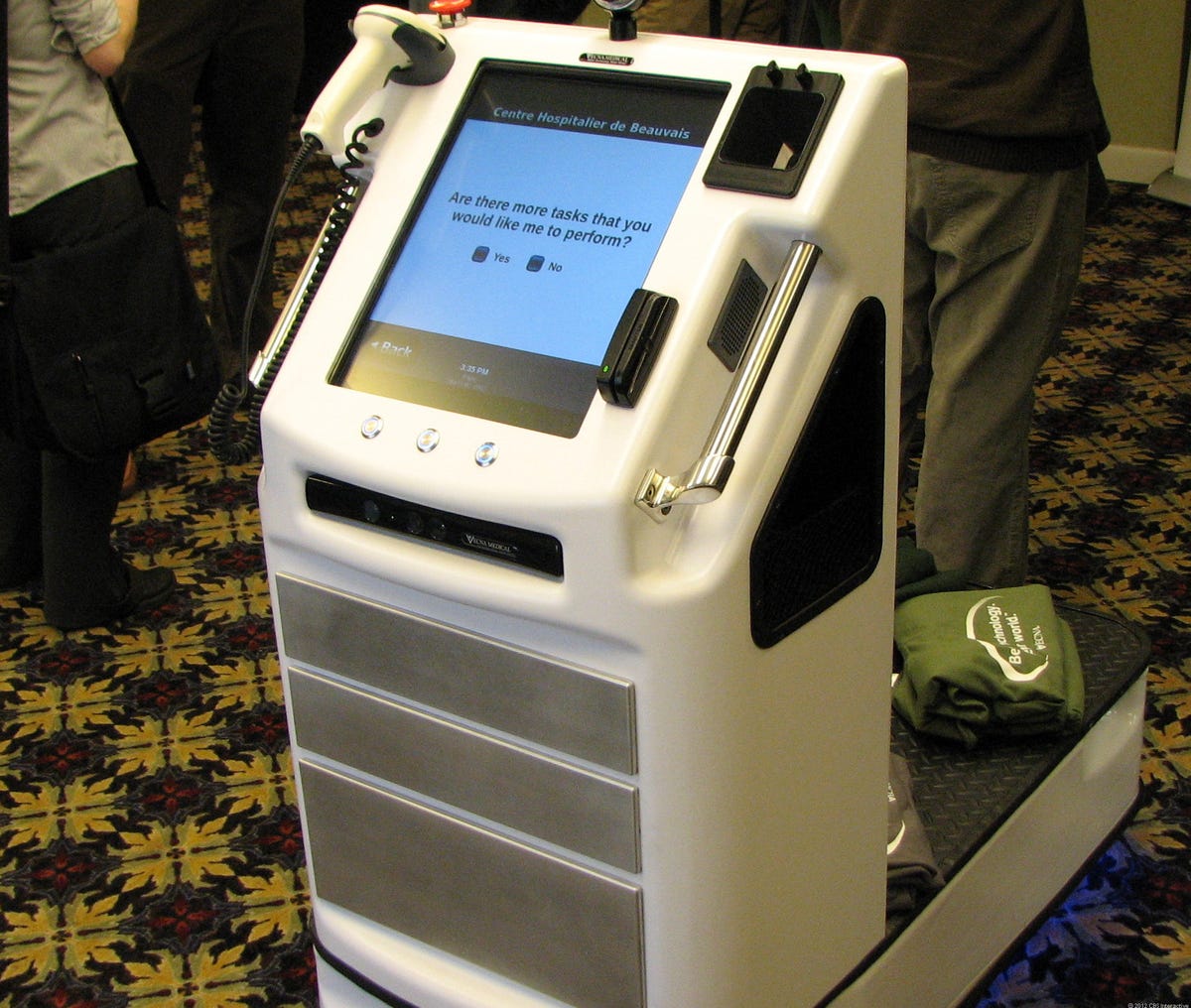Robots look for real-world jobs (photos)
At the Human-Robot Interaction conference, industrial and research robots show off what they can do.

Pharma fetcher
BOSTON--At the Human-Robot Interaction conference here, industrial and research robots show off what they can do.
Not all robots are humanoids. In fact, the ones that do work frequently are not designed with human-like features. Pictured here is a robot from Vecna Robotics that is used to carry goods or act as a kiosk. It's being tested in a hospital in France where nurses sign in, submit the drug orders they need, and the robot will navigate the hospital and retrieve the drugs.
MUGV
This micro unmanned ground vehicle (MUGV) from QuinetiQ is equipped with a camera, microphone, and sensors to give it situational awareness. The military now uses more than 12,500 robots to find and diffuse bombs.
Remote control
This display is how soldiers operate the company's MUGV. A soldier is also equipped with a backpack with the additional equipment, such as radio frequency communications, to operate the robot.
Mobile Robotics
This robot from Adept Mobile Robotics is also designed for carrying things, particularly in a manufacturing setting. One of the important features of modern robots is their ability to learn a physical space by traveling through it and creating a map for future use.
Mapping software
This screen shows the software platform from Adept Mobile Robotics machines which are sold to both researchers and manufacturers. Using its camera, the robot can move through a space and, piece by piece, build up an accurate map of the building so it can navigate autonomously later.
Beat it
Humanoid robots are widely used as toys or for research and could be used for companionship. This is Nao (pronounced "now") by Aldeberan Robotics, which is used in education, such as the robocup robot soccer competition. It's 2 feet tall, weighs 30 pounds, and has cameras, microphones, and sensors. It can be programmed with C++, Python, or Java.

